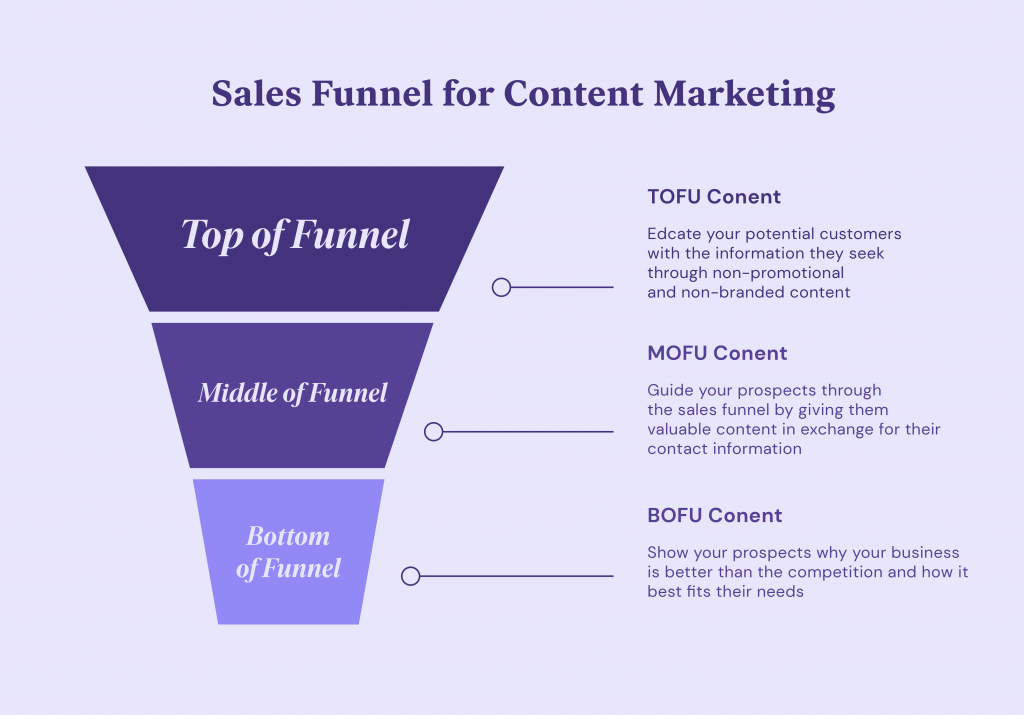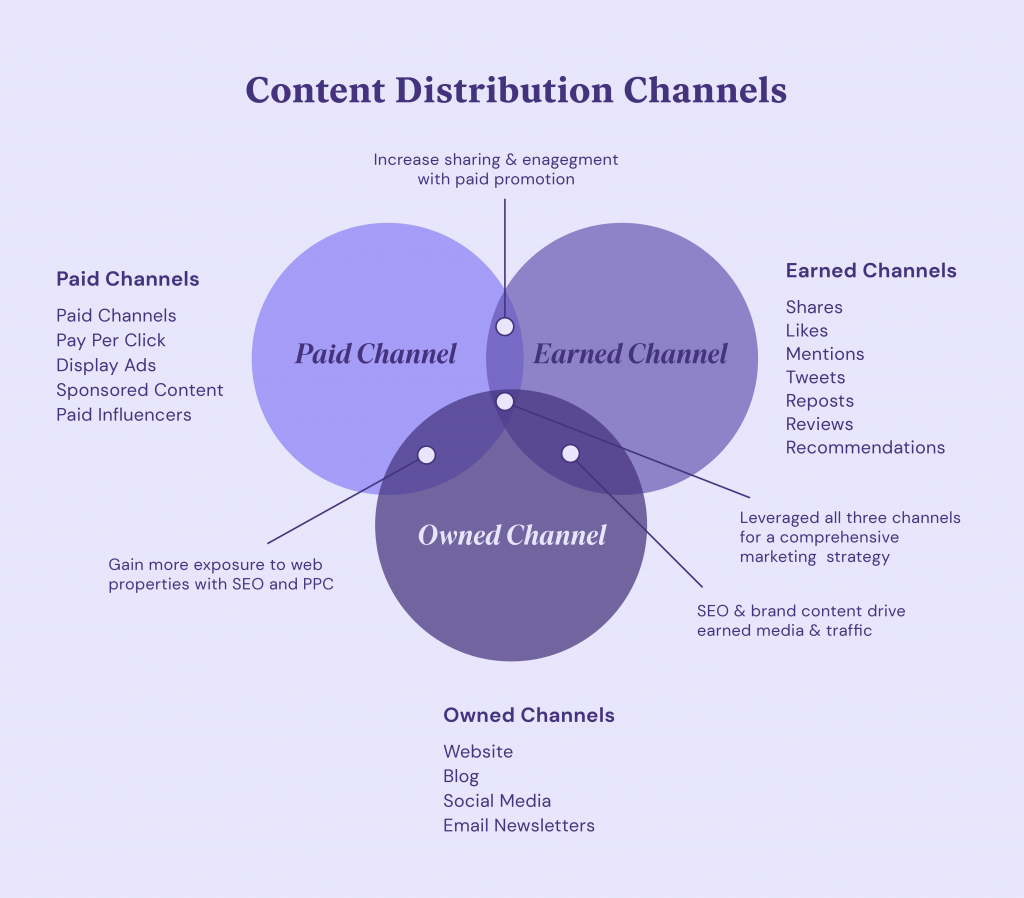Whether it’s a million-dollar NFT monkey or a short film on YouTube, content is everywhere. In an increasingly saturated marketplace where building audiences organically feels exclusively pay-to-play, you need to define a clear content strategy to not only stand out but to drive business results. Mindless blogging won’t cut it — especially when over 5 million new blog posts are published every day.
So the real question is this: everyone can create content, but can you do it well?
The first step is defining what content marketing is. Content marketing is a strategic marketing approach of crafting valuable content to a specific audience to generate positive business results. Look, you’re reading this article on content strategy and there’s no better way to convince you on how to do it well than showing you myself through this piece I’m writing right now.
But before we get trapped in the rabbit hole, let’s take a step back and look at why your brand needs a content marketing strategy.
Why Your Brand Needs a Content Marketing Strategy
Content marketing is three times more cost-effective at lead generation than paid search. Websites that have blogs attract 55% more traffic, and blogs statistically are the most effective brand-building tool.
When used effectively, content marketing is a powerful device to build trust with an engaged audience to stay top of mind, and drive sales. When your content entertains, inspires, educates, connects, or delights, your content can be utilized to differentiate yourself from your competitors, increase brand awareness, and ultimately grow your business.
Content marketing is not a siloed function of marketing. In fact, content plays a role in every department of your organization. This is why you need a documented content strategy to align your goals across the organization. More on this later.
Types of Content Marketing
There are limitless types of content you can create today. However, if we had to bucket them they’d fall into one of four categories: written, audio, visual, interactive. Let’s break it down.
Written Content
Written content includes everything from blog posts, ebooks, whitepapers, product one-sheets, testimonials, FAQs, and case studies. Blog writing is one of the most popular content formats utilized by brands today, primarily focusing on SEO to build brand awareness and website traffic. Longer form editorial content like ebooks and data reports are excellent lead generation tools that offer readers in-depth research in your area of expertise.
Sales enablement content like testimonials, FAQs, product one-sheets, competitive comparison sheets, and case studies equip sales teams with educational tools to help the purchase consideration process by providing critical information on how you can provide value to the customer. Don’t worry, we’ll cover how this all fits into your content marketing funnel later in this post.
Audio Content
Audio content focuses on channels that are consumed auditorily via a hands-free and screen-free experience. This can include everything from podcasting, live broadcasting through Clubhouse or similar platforms, or even creating music.
Podcasting is a great way to interview prominent influencers that can later be repurposed into articles and editorial content. Broadly, audio platforms like Clubhouse allow you to create deeply personal relationships with your audience.
But why limit yourself to traditional audio formats? Hamburger Helper made waves by dropping a mixtape on April Fools.
Visual Content
Visual content communicates a message through design in an easily digestible manner. Some concepts are hard to explain and easier to show. The most common types include infographics, memes, gifs, photos, charts, diagrams, and slide decks. As bizarre as today’s reality is, there’s a reason why both influencers and politicians are leveraging memes to get their message across the internet. And as the cliche goes, a picture is worth a thousand words. But in an Instagram and Twitter reality, it’s worth millions.
Interactive Content
Interactive content engages your audience by providing them with a valuable experience. This includes webinars, calculators, web tools, checklists, polls, and even games. Just like we learned in grade school, everybody has their own unique learning styles and interactive content is a great way to keep your audience engaged in different ways. Interactive content is an excellent tool to create a two-way relationship with your audience.
How To Create a Content Marketing Strategy (Practical)
1. Earn Organizational Buy-In
Successful content marketing programs are not born in silos but are highly cross-collaborative. To get to that point, you need to start by building a documented business case to ensure the investment in the program makes sense. And just because everyone is doing content marketing doesn’t mean you should too.
Creating a successful business case includes how much creating content will cost, how the content will be utilized, and how it will be measured. Don’t forget to include why you’re making content, how it will improve the business, and who will own the outcomes. This integral first step will help you narrow down your scope before being pulled in a million directions from thousands of external content requests.
2. Develop Your Brand Story
Now that you know you’re building a content marketing program, you need to define who you’re serving and why. Pinpoint who your target audience is and dive deep into the pain points that you’re trying to solve. It doesn’t matter if you’re building out your personas, archetypes, or ideal customer profiles. What matters most is answering the following questions:
- What is the client’s problem?
- What is the clients’ current state?
- How do you solve that problem?
- What is your client’s ideal future state?
Once you’ve gathered your research, now begin crafting your narrative. Where are you in the competitive landscape? How is your product or service going against the grain? How are you positively impacting the world? Creating a clear brand story will breathe new life into your content campaigns and help you create a unified message across all your content campaigns.
3. Identify Your Key Channels
While some marketers may argue that you should build content on every platform possible, the lack of focus will set you up for failure. Instead, identify the three most popular channels where your key audience lives and find ways to build genuinely valuable content on each unique platform. Identify what content formats are most successful by analyzing relevant competitors, influencers, and hashtags and replicate their success.
More importantly, these three platforms will serve as your core distribution channels. So whenever you create a new piece of content, you can distribute and repurpose each piece with this in mind.
4. Conduct Topic Research
By now, you should have a firm understanding of your customer’s greatest pain points. To translate this into what content to produce, conduct a mix of topic research processes.
Nothing beats speaking directly with your customers. If you don’t have access to these conversations, keyword research is a great place to start. Hop on over to our ‘tools’ section towards the end of this article to get started.
Quick ways for marketers to generate content ideas:
— Amanda Natividad (@amandanat) July 27, 2021
✅ Read through customer support tickets
✅ Re-read a blog post from 2 weeks ago and ask yourself follow-up questions
✅ Ask your sales team for a FAQ
Additionally, you can look at Quora or Reddit to identify the most commonly asked questions in your niche. Also consider joining online forums, Facebook groups, and other online communities. Document the most commonly asked questions and burning topics of conversation.
5. Map Your Content Topics and Formats to Your Content Funnel
Now let’s organize your jumbled mess of content ideas into an achievable content program. Mapping out a customer content journey allows you to intentionally create content that makes the highest impact to drive business results. An easy place to start is thinking about the content funnel, which is broken down into Top of Funnel (awareness), Middle of Funnel (consideration), and Bottom of Funnel (decision) content.

Top of Funnel Content (TOFU)
At the very top of your funnel is the awareness phase, where you want to create high-value content in a broader context for an audience that doesn’t necessarily understand the problems they’re facing. They’re unaware of your solution but are willing to learn more about a specific topic of concern. This includes everything from “how-tos,” infographics, social media, thought leadership pieces, listicles, email marketing, checklists, ebooks, and pillar SEO content.
Middle of Funnel Content (MOFU)
In the consideration phase, your audience has a specific problem at hand and is looking for a solution. Whether or not it’s YOUR solution specifically, your content should be educational but also softly mention the solution you’re offering. You can cover your niche’s topics more in-depth through product overviews, case studies, guides, success stories, and more.
Bottom of Funnel Content (BOFU)
In the decision process, your audience is ready to buy. Provide content that helps your audience fully understand the value of your product and services and show why you’re better than your competitors. This can be done through product one-sheets, product demos, comparison charts, customer reviews, and product use cases.
Begin the Mapping Process
Categorize all the content topics you’ve gathered into these three funnel stages. To finalize the roadmap, prioritize high-value content pieces first that you believe will make the biggest impact. If your focus is on SEO, you can take the keywords with the highest search volume and lowest competition to get started. Align with your sales teams to also identify which sales-facing content should be prioritized.
6. Create Measurable KPIs
There are KPIs that matter and those that are there to just look pretty. To build a highly effective content machine, it’s integral to hone in on the metrics that make a difference to your bottom line. But it’s a balance. Thinking too much about bottom-of-the-funnel conversion metrics can make you shortsighted and stop thinking about building an engaged audience in the long term.
The key is to approach every content project like a science experiment rather than taking industry ‘best practices’ for gospel.
- Generate a hypothesis
- Design an experiment
- Perform an experiment
- Analyze the data
- Draw a conclusion (accept or reject the hypothesis)
- Test and repeat
Use the following metrics to generate informed hypotheses:
- Month over Month Readership
- Time spent on page
- Unique vs Returning Visitors
- Page conversion rates
- Email engagement
- Social Shares
- Brand sentiment (NPS scores, customer reviews, sentiment analysis software)
7. Establish Processes
There are three key elements to a successful project management process. Editorial calendar, brand guidelines, and a reporting cadence.
The editorial calendar is the lifeblood of your content team. Whether it’s a Trello board or a simple spreadsheet, an editorial calendar will help you stay on top of roles, responsibilities, timelines, and project statuses. Here are the key things you need to track in your editorial calendar:
- Owner: Who is producing the content?
- Draft and Publish Date: When is the first draft due? When is the article being published?
- Topic: What is the title of the piece?
- Draft URL
- Published URL
- Project Status (backlog, briefed, in progress, editorial review, scheduled, published)
The brand guidelines and editorial guidelines are guardrails for your content team to produce content that is aligned with your brand values and voice at scale. Ensure your brand’s voice, values, and prose are included, but simply having a list of Do’s and Don’ts is a good starting point. The more you invest in building easy-to-follow guidelines, the easier it will be to onboard additional writers and content producers down the line.
Lastly, establish a reporting cadence that allows you to keep track of your content performance. We’ll dive more into this in section 10, but the key thing to remember is to create a culture of testing, measuring, and optimizing content consistently.
8. Produce Great Content
It’s finally time to start producing great content that everyone will be proud of. You will always have the option of getting a content marketing service for SaaS company, for example, but trying on your own is the least you can do when just starting. So, brace yourself and start putting together unique content.
Here’s a quick checklist to ensure you’re producing high-quality content.
- What is the purpose of this piece of content? Is it clearly defined in your piece?
- What is the problem you are solving?
- How does your brand fit into the equation?
- How is your content better than your competitors?
- What is your call to action?
9. Distribute Relentlessly

While everyone knows content is king, successful content marketers know distribution is queen. The old adage “if I build it, they will come” is a myth, especially so in this saturated market of marketers desperately fighting for your attention.
Here are my seven favorite distribution strategies you can utilize today:
- Create unique experiences on each individual social channel. People consume content much differently on Instagram than they do on Twitter. So, create original content native to each platform.
- Quote experts and influencers and ask them to share the piece with their audiences when you publish each piece.
- Distribute your content to your email list through newsletters or promotional emails.
- Answer questions on Quora, Reddit, and online communities and share the resource with them in a genuine way.
- Leverage paid channels to amplify your reach.
- Identify key partners to cross-promote your content through their channels.
- Incentivize employees in your organization to share the content with their networks.
10. Optimize, Kill, or Repurpose
The shelf life of a new piece of content is brief. That is unless you continue to breathe life into it. Regularly track your content performance over time, and ensure there’s always an action plan for each item. I like to take one of three courses of action:
- If there are opportunities for your content to improve, optimize your content to rank higher for SEO or ensure it’s better than your competitors.
- If your content is cannibalizing other pieces, doesn’t contribute to your overarching goals, or does not serve a unique purpose, kill your content.
- If you have a large piece of content that provides unique value, repurpose your content for other channels or smaller content formats.
11. Embrace Serendipity
The last step is to embrace the unknown and be willing to take on opportunities that come out of creating great content. Whether it be working with an influencer that loves your content or a fantastic video idea, always give your team room to test the waters and play with new content formats. You never know what will stick! So don’t be rigid and push the boundaries of what you can create today.
24 best Content Marketing Tools
Creating and scaling a successful marketing engine is made much easier with the tools available out there today. Marketing automation, AI, and advanced production tools all play an integral role in growing content operations. Here are our 24 favorite content marketing tools you can utilize today.
Content Ideation
- Google Ads Keyword Planner: keyword tool that provides comprehensive search data
- Google Search Console: see what keywords you’re ranking for on Google Search
- Google Trends: identify search volume data around relevant topics
- Quora: Q&A discovery tool to find what people are curious about
- Reddit: online communities for every topic imaginable
- Advanced Twitter Search: dive deep into what people are saying
- Buzzsumo: keyword research, influencer research, and link building tools
Content Briefing
- MarketMuse: for content planning, briefing, and optimization
- Clearscope: for content optimization at scale
SEO
- Semrush & Ahrefs: keyword research, SEO optimization, and competitive research tool
- Content King App: Real-time SEO audit and monitoring tool
Editing
- Grammarly: Grammar checker
- Word Tune: AI-powered tool to help rephrase and restructure sentences
- Hemingway Editor: grammar, flow, and composition editor
- Ginger: English grammar and writing app
- Copy.ai: utilize AI to generate copy for your content
Production
- Canva: free design tool with thousands of templates
- Biteable: make quick videos in minutes
- Adobe Spark: easily create graphics, images, gifs, and more
Distribution
- Alfred: LinkedIn and email outreach automation tools
- Buzzstream: link building and digital PR tool
- Pitchbox: influencer outreach & link building tool
Measurement
- Google Analytics: web analytics to measure your website traffic and performance
- Google Search Console: identify and track your website performance on Google search
- Google Data Studio: create comprehensive data reports from multiple sources
- Hotjar: measure user behavior through recorded user pathways and heatmaps
Content Management System
- WordPress: tried and true content management system that runs 30% of modern websites
- Elementor: codeless & design-focused website builder
Wrapping It All Up
Producing content is not all about writing about the trendiest topics — no matter how exciting it can be. Successful content marketing programs are built on a laser-focused strategy that involves more than just blog writing. It’s a mishmash of creating a business case, developing a unique point of view, deep audience research, process building, production, distribution, measurement, and analysis. All in all, content marketing strategy requires research and processes to ensure long-term success.
And in case you’re feeling a little overwhelmed, we have a plethora of free resources you can utilize to build out a successful content marketing engine for your business today. Check out our academy for free tools, checklists, guides, and more!
Looking for fresh content?
By entering your email, you agree to receive Elementor emails, including marketing emails,
and agree to our Terms & Conditions and Privacy Policy.
